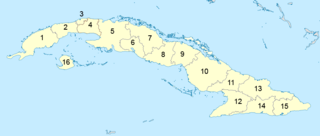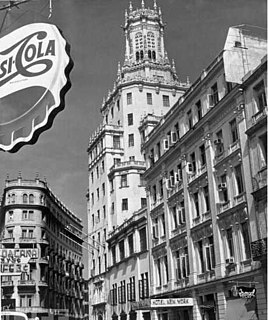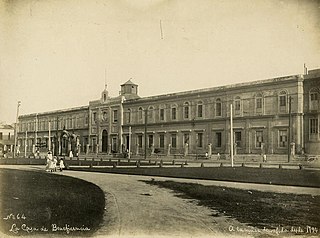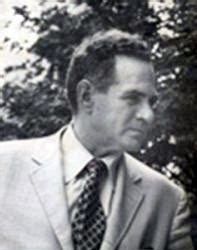
Havana is the capital and largest city of Cuba. The heart of the La Habana Province, Havana is the country's main port and leading commercial center. The city has a population of 2.1 million inhabitants, and it spans a total of 781.58 km2 (301.77 sq mi) – making it the largest city by area, the most populous city, and the fourth largest metropolitan area in the Caribbean region.

Administratively, Cuba is divided into 15 provinces and one special municipality. The last modification was approved in August 2010, splitting Havana province into two new provinces: Artemisa and Mayabeque. The new provinces started functioning from January 1, 2011. Havana City Province recovered its original name: La Habana.

Miramar is a residential district of the municipality of Playa, in the city of Havana.

Playa is one of the 15 municipalities or boroughs in the city of Havana, Cuba. The word playa means "beach" or seaside in Spanish.

Havana Cathedral is one of eleven Catholic cathedrals on the island. It is located in the Plaza de la Catedral on Calle Empedrado, between San Ignacio y Mercaderes, Old Havana. The thirty by forty-nine meters rectangular church serves as the seat of the Roman Catholic Archdiocese of San Cristóbal de la Habana. Christopher Columbus’ remains were kept in the cathedral between 1796 and 1898 before they were taken to Seville Cathedral.

El Capitolio, or the National Capitol Building, is a public edifice in Havana, the capital of Cuba. The building was commissioned by Cuban president Gerardo Machado and built from 1926 to 1929 under the direction of Eugenio Rayneri Piedra. It is located on the Paseo del Prado, Dragones, Industria, and San José streets in the exact center of Havana.

La Mansión de Mark Pollack, is a neo-classical, Florentine mansion in the Cubanacan Section of Havana, Cuba built in 1930 by the Cuban architect, Leonardo Morales y Pedroso (1887–1965). It is located at 21st street #15001, Cubanacan, Havana, Cuba. It was built for Mark Alexander Pollack (1874–1946),the son of Alexander Pollack and Belle A. Rothschild (1848-1936), the American-born patriarch of a wealthy Cuban tobacco exporter. The house covers an area of 13,000 square meters.

Leonardo Morales y Pedroso was one of the most prominent Cuban architect in Cuba in the first half 20th century. In 1900 he entered and attended pre-university studies at De Witt Clinton High of New York, where he obtained a Bachelor's degree. In 1909 he graduated of Bachelor in Architecture from Columbia University. After graduating, he returned to Cuba in 1909 where he worked a time in the local architect firm of Newton & Sola with the architect Thomas M. Newton, who was director of the civil construction section of the Secretary of Public Works during the 2nd American intervention in Cuba. In February 1910, he returned to the United States and obtained a Master's degree (Doctor) in Architecture from Columbia University in the State of New York. After obtaining his doctorate in architecture he joined in march 1910 the architecture Company Morales y Mata arquitectos, created in 1907 by his elder brother the engineer Luis Morales y Pedroso in association with the master builder Jose F. Mata. In 1917, after having built more than 30 important buildings, they decided to separate from José Mata, who had to stop working because illness and died a short time later. The company changed its name for Morales y Compañia Arquitectos with his brother the engineer Luis Morales y Pedroso as President and Leonardo as Associate together with other 7 architects. He was able to obtain noteworthy real estate commissions partly because of his family’s origin, good social connections and social standing in Havana high society. He was named by the cuban press of the time as the "Havana's architect" and his architectural style is recognized as the "Morales style". During 50 years Leonardo Morales y Pedroso received around 250 notable architectural commissions, some of them include:
Carlos Rafael Uribazo Garrido is a Cuban artist specializing with painting, engraving, drawing, graphic design, photography, and ceramics. Since 1989, Uribazo resides in Madrid, Spain.

Havana was founded in the sixteenth century displacing Santiago de Cuba as the island's most important city when it became a major port for Atlantic shipping, particularly the Spanish treasure fleet.

Havana Central is the main railway terminal in Havana and the largest railway station in Cuba, is the hub of the rail system in the country. It serves for the arrival and departure of national and divisional commuter trains, and is home to the national railway company, Ferrocarriles Nacionales de Cuba (FFCC), the only intercity passenger rail transport operating in the Caribbean.
The following is a timeline of the history of Havana, Cuba.

Santa Clara is the main railway station of the city of Santa Clara, seat of Villa Clara Province, Cuba. It is owned by the state company Ferrocarriles de Cuba (FFCC) and is located in front of Parque de los Mártires. It is one of the most important stations of Cuba and, along with Havana Central, Santiago and Camagüey, is a network's divisional headquarters.

Royal Bank of Canada Building, Havana is a Neoclassical-style bank building located at corner of Calles Aguiar and Obrapia in Habana Vieja. The ground floor was dedicated to the bank, the other floors to offices that were rented; a floor was added for a semiprivate restaurant and club.

La Casa de Beneficencia y Maternidad de La Habana, was for 270 years Havana's repository of Havana's unwanted children. The House of Charity started during a time when Cuba was experiencing extreme poverty, unemployment, and corruption in the government. Corrupt leaders were plundering the public treasury and little attention was given to social assistance, health, education, or the protection of the poor: "los desamparados".

The López Serrano Building was the tallest residential building in Cuba until the construction of the FOCSA in 1956. Designed by the architect Ricardo Mira in 1929, who in 1941 who also designed La Moderna Poesia bookstore on Obispo Street for the same owner, it is often compared to the Bacardi Building in Old Havana built two years before the López Serrano Building because of their similarity in massing and central tower. The congressman, senator, and presidential candidate Eduardo Chibás was living on the fourteenth-floor penthouse when he committed suicide in August 1951 on the air at CMQ Radio Station.

The Iglesia del Espíritu Santo at #161 Calle Acosta was built in 1635 on the corner of the corner of Calles Cuba and Acosta by a fraternity of Afro-Cuban ex slaves. The Espíritu Santo contains some notable paintings including a seated, post-crucifixion Christ on the right wall, and catacombs. It is considered one of the oldest temples in Havana and it is said that its main interest lies essentially in the simplicity or simplicity of the beautiful stone construction.

The Edificio del Seguro Médico is a commercial building in El Vedado, Havana. Built between 1955 and 1958, it was designed as a mixed use building for apartments and offices for the headquarters of the National Medical Insurance Company by Antonio Quintana Simonetti.

Barrio de San Lázaro is one of the first neighbourhoods in Havana, Cuba. It initially occupied the area bounded by Calle Infanta to the west, Calle Zanja to the south, Calle Belascoáin to the east, and the Gulf of Mexico to the north, forming the western edge of Centro Habana. According to the 1855 Ordenanzas Municipales of the city of Havana, Barrio San Lázaro was the Tercer Distrito and was Barrio No. 8.

Mario Romañach (1917–1984) was a Cuban modernist architect, planner, and university professor.

















